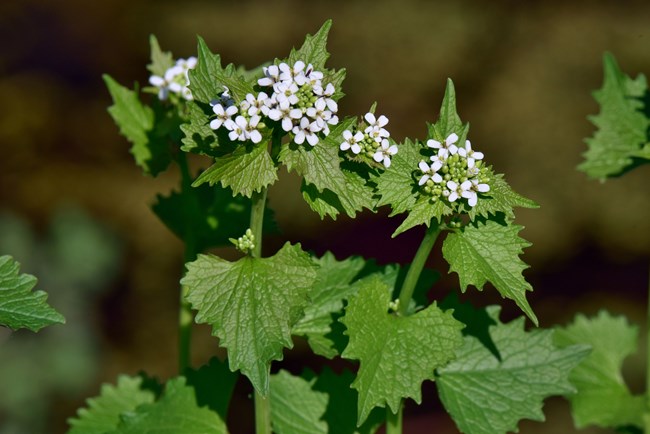
© J.J. Prekop, Jr. Garlic Mustard, Alliaria petiolataThis is a biennial herb, meaning that it completes its life cycle within two years. Habitat ranges from moist ravines to dry roadsides, from forest edges and interiors to floodplains. Garlic mustard out-competes native spring wildflowers for light, nutrients, and water. IdentificationFirst-year plants exist as a rosette of kidney-shaped, coarsely serrated leaves. Crushed leaves and stems smell of garlic. Second-year plants form a shoot, which flowers in the spring. These mature plants reach 2 to 5 feet in height and produce clusters of cross-shaped, small, white flowers. OriginGarlic mustard came to the Unites States from Europe, accompanying settlers who used it for food and medicinal purposes. How It SpreadsA second-year plant may produce and disperse thousands of seeds. White-tailed deer may contribute to its spread by selectively eating only native wildflowers and leaving garlic mustard untouched. Control MethodsFrom May through June, plants should be pulled before seeds and flowers develop. If pulled before flowering, plants can be left on site to decompose. If plants are pulled after flowering, they should be bagged and removed. Spraying plants with glyphosate is effective during spring and fall when most native vegetation is dormant, yet garlic mustard is green. Spray when air temperatures are above 32ºF. |
Last updated: March 2, 2022
